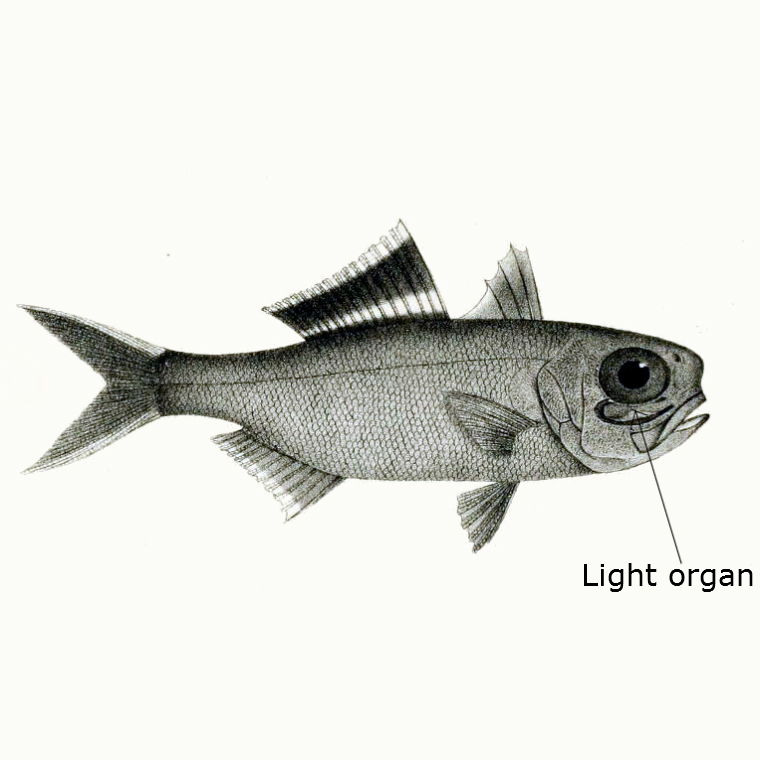Animals are unable to tell us why they do the things they do, and curious scientists often want to find out. They set up experiments to see how animals behave in certain situations and try to determine the motivations for the behavior. The behavior often gives the animal a survival edge, as is the case for this study of Anomalops katoptron, otherwise known as the splitfin flashlight fish. This fish lives in shallow waters in coral reef caves in the Indian Ocean, and has some peculiar traits.
Researchers in Germany wanted to understand the purpose of blinking lights under the flashlight fish’s eyes. That’s right – blinking lights! Many species of fish actually live in a symbiotic relationship with glowing bacteria that live on their bodies. “Symbiotic” means that both species benefit from the relationship — the fish get light in dark waters and caves, and the bacteria get a place to live and eat.
In the case of the flashlight fish, the light organs are bean-shaped cavities under their eyes filled with this particular kind of glowing microorganism, and they blink at regular intervals at night. The blinking patterns are in fact so striking that it startled scientists and inspired them to want to look for meaningful patterns or a purpose for the blinking. They proposed three possibilities: to ease the fish’s ability to catch prey in the dark, to communicate with other fish, or to confuse and avoid predators.
The scientists were able to study the splitfin flashlight fish in a laboratory setting because these fish are comfortable in shallow waters and were therefore suited to living in a tank, where the environment could be tightly controlled and monitored. The blinking patterns were recorded using an infrared camera so that behavior could be observed even in the dark. Under laboratory conditions, scientists found that the blinking pattern changes between day, night, and during feeding. Because there was a variation during feeding, this lead the researchers to believe the blinking was related to feeding.
The flashlight fish blinks less often during the day and the light organ is open less often compared to night time, where the blinks increase from 14 blinks per minute to over 90 blinks per minute in the dark. The light organs themselves also open and close differently during day, night, and feeding. During the day, the light organs were closed 90% of the time. During the night, however, the light organs were closed only half of the time. During feeding, the light organs were actually open 90% of the time, and the blink frequency increased to 44 blinks per minute. Additionally, and perhaps importantly, the change in blinking and opened/closed state of the light organ appeared to be triggered by the presence of food. A simple summary is shown below. To see the full dataset, go to the paper here.

The above graphs were created by Sciworthy and show a simplified summary of the data. Please visit the full paper for the real figures.
This is the first time the flashlight fish blinking patterns and feeding behavior has been rigorously tested and described. The researchers were careful to use a control group of non-luminous flashlight fish – those with poorly functioning light organs. This allowed them to rule out the influence of the light on other fish behaviors, such as interspecies communication. The data overwhelmingly suggest that the fish use the light to find prey in the dark, which further supports the idea that the fish and the bacteria have a relationship where both species benefit.


